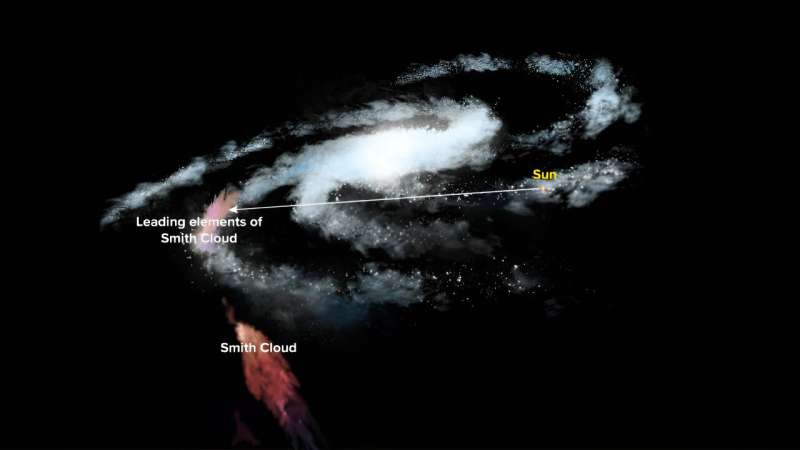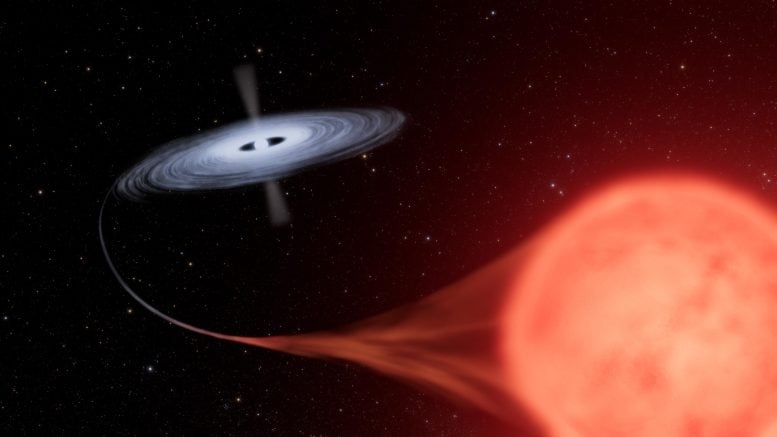
Most neutron stars rotate rapidly, completing a rotation in seconds or even fractions of a second. But astronomers have found one that takes its own time, completing one rotation in 54 minutes. What makes this strange object spin so slowly?
When a massive supergiant star explodes as a supernova, it leaves behind a collapsed core. The extreme pressure forces protons and electrons to combine into neutrons. Since they are made almost entirely of neutrons, we call them neutron stars. These stellar remnants are extremely small and extremely dense. Only black holes have greater density.
Due to the conservation of angular momentum, neutron stars begin to spin rapidly, often spinning at speeds of up to several hundred times per second. Astronomers have found more than 3,000 radio-emitting neutron stars, and of all of them, only a very small number rotate slowly.
We usually detect neutron stars by their electromagnetic radiation and call them pulsars. Astrophysicists also call them long-period transient radio slow spins. There is uncertainty about their slow rotation rates and whether they are even neutron stars, and the latest discovery is not helping to dispel the uncertainty.
In new research in Nature Astronomy, a team of researchers reports the discovery of ASKAP J1935+2148, a long-period radio transient about 16,000 light-years away. The paper is “A 54-Minute Period Switching Transient Radio Emission”. The main author is Dr. Manisha Caleb from the University of Sydney in Australia.
“Long-period radio transients are an emerging class of extreme astrophysical events of which only three are known,” write the paper’s authors. “These objects emit highly polarized, coherent pulses with typical durations of a few tens of seconds and minutes to periods of approximately an hour.”
Researchers have proposed various explanations for these long-period objects, including highly magnetic white dwarfs and highly magnetic neutron stars called magnetars. But the research community has not reached a consensus.
ASKAP J1935+2148 has an extremely long period of 53.8 minutes and three distinct emission states. Its bright pulse state lasts from 10 to 50 seconds, and its faintest pulse state, 26 times fainter, lasts about 370 milliseconds. It also exhibits what is called a “quenched state” without impulses.

Astronomers discovered the strange object by accident while observing an unrelated gamma-ray burst with the Australian Square Kilometer Array Pathfinder (ASKAP) telescope in October 2022. The observations revealed bright pulses of radio emission from ASKAP J1935+2148. In about six hours of observations, the object emitted four bright pulses lasting from 10 to 50 seconds. Inspections of the light curve and subsequent observations with the MeerKAT radio telescope revealed the entire pulsating pattern of the object.
“This discovery relied on the combination of the complementary capabilities of the ASKAP and MeerKAT telescopes, as well as the ability to search for these objects on time scales of minutes by studying how their emission changes from second to second! Such synergies are allowing us to shed new light on how these compact objects evolve,” said Dr. Kaustubh Rajwade, co-author of the paper and an astronomer at the University of Oxford.
The three states of emission, each different from the others, are strange. The researchers had to verify that every signal from each country came from the same point in the sky. The fact that each signal had the same time of arrival (TOA), as determined by ASKAP and MeerKAT observations, indicates a single source.
“What is intriguing is how this object exhibits three distinct states of emission, each with completely different properties from the others. The MeerKAT radio telescope in South Africa played a crucial role in distinguishing between these states. If the signals weren’t coming from the same point in the sky, we wouldn’t have believed it was the same object producing these different signals.”
ASKAP detected the object’s strong and bright pulse mode, while MeerKAT detected its weakest and faintest pulse mode. Both telescopes discovered quiescence mode.

“In the study of radio-emitting neutron stars, we’re used to extremes, but this discovery of a compact star that rotates so slowly and still emits radio waves was unexpected,” said paper co-author Ben Stappers, professor of astrophysics at University. of Manchester. “It’s showing that pushing the boundaries of our search space with this new generation of radio telescopes will reveal surprises that challenge our understanding.”
The nature of the emissions and the rate of change of rotation periods strongly suggest that ASKAP J1935+2148 is a neutron star. However, researchers say they cannot rule out a highly magnetized white dwarf. Since astrophysicists think that white dwarfs are highly magnetized like binaries, and there are no other white dwarfs nearby, the neutron star explanation is more likely.
The object’s radius also does not match our understanding of white dwarfs. “However, the implied radius is ~0.8? solar radiation, leading us to conclude that this source cannot be expected from standard models of white dwarfs,” the researchers explain. White dwarfs are only slightly larger than Earth, which seems to eliminate one as a potential source.
Only follow-up observations and more dedicated studies can reveal the true nature of the object. Either way, whether it’s a white dwarf or a neutron star, the object will open another window into the extreme physics of each type of object. Our understanding of both objects is only a few decades old, so there will surely be much more to discover.
“It is important that we probe this hitherto unexplored region of neutron star parameter space to get a complete picture of neutron star evolution, and this could be an important resource for doing so,” they conclude. the authors.
#Astronomers #find #slowestspinning #neutron #star
Image Source : www.universetoday.com



